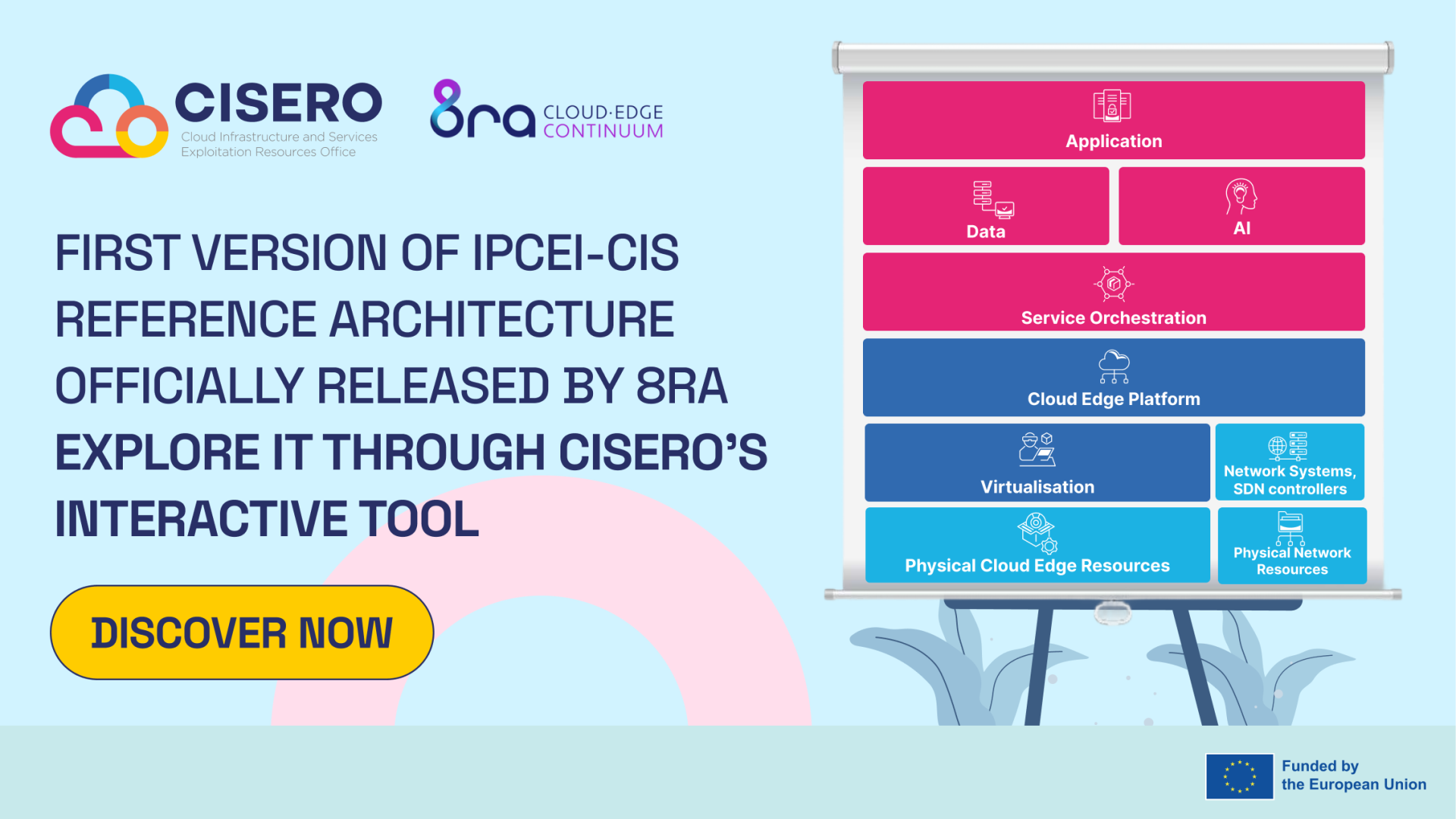First Version of IPCEI-CIS Reference Architecture Officially Released by 8ra — Explore It Through CISERO’s Interactive Tool
4, July, 2025

The first version of the IPCEI-CIS Reference Architecture has officially been launched, marking a major milestone for the 8ra initiative and Europe’s broader ambitions to build a sovereign, federated cloud-edge infrastructure.
To support stakeholder engagement, the CISERO project has developed an interactive version of the architecture, now available online for easy exploration.
The Reference Architecture was developed collaboratively by leading industry and research actors. It provides a common blueprint to align stakeholders across countries and sectors. It is designed to enable interoperable, scalable digital services—laying the technical foundation for a trustworthy and efficient cloud-edge continuum in Europe.
The architecture is structured around eight core layers that reflect the complexity and richness of modern digital infrastructure:
- Application Layer: Focused on end-user applications and function catalogues.
- Data Layer: Enables trusted, distributed data exchange across the continuum.
- AI Layer: Incorporates advanced intelligence capabilities.
- Service Orchestration Layer: Coordinates services in an automated, unified manner.
- Cloud-Edge Platform Layer: Manages service deployment and lifecycle.
- Virtualisation Layer: Abstracts compute, storage, and networking resources.
- Network Systems Layer: Covers management of both virtual and physical networks.
- Physical Layer: Represents the underlying hardware and connectivity.
These layers are supported by cross-cutting domains such as:
- Federation, ensuring smooth collaboration among providers and alignment with regulatory frameworks like the EU Data Act;
- Management, which handles monitoring, automation, and service-level assurance;
- Security and Compliance, to enforce data protection, access control, and adherence to standards;
- Sustainability, which addresses energy efficiency, smart workload placement, and the reduction of environmental impact across cloud-edge infrastructures.
The architecture is officially introduced on the 8ra website, outlining its strategic role in the broader IPCEI-CIS framework. It serves as a common reference across the IPCEI-CIS Integrated Project—helping describe and compare technological solutions, workstream activities, and pilots.
This first version focuses on functionality and is not intended as an implementation guide. Compatibility and interoperability are ensured through the use of standard open interfaces. Future updates will gradually introduce technical integration details, such as interface definitions and federation mechanisms.
Explore the CISERO interactive version to better understand the architecture’s layers and components in greater detail. The tool is designed to make the Reference Architecture more accessible and user-friendly, and will soon offer the possibility to provide direct feedback. Start exploring and get involved!
Explore here the IPCEI-CIS Reference Architecture
To further support stakeholder engagement and foster deeper understanding of the IPCEI-CIS Reference Architecture, CISERO is also organising a dedicated webinar on 22 July. This online event will provide an overview of the architecture, walk through its key components, and offer space for discussion and questions. The full agenda and registration details are available at this link. All interested parties are encouraged to join and take part in shaping Europe’s future cloud-edge ecosystem.